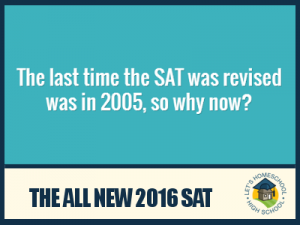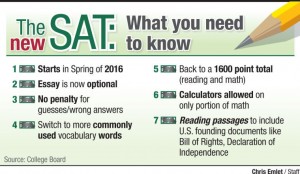Is SAT or ACT Prep Part of Your Summer Agenda?
Summer may be around the corner – but, like it or not, standardized testing doesn’t take a break! This year, for the first time ever, College Board is offering a summer SAT on August 26th. Next summer, ACT also announced a July 14, 2018 test option. It’s best to make your testing arrangements ahead of time, and because schedules are often less hectic in the summer – many students find it easier to buckle down on their study plans during July and August.
If you’re a rising junior and would like to start the testing process early, this summer you’ll want to take SAT and ACT practice tests to determine which test you prefer. Or, if you’re heading into your senior year, you can take advantage of the summer to prepare for some final testing opportunities offered in the fall.
For optimal testing results, you must make testing preparation a priority – even when it’s more appealing to go to the beach with friends. Keep these 3 preparation tips in mind:
Stick to a strict study schedule. Summer vacation can undoubtedly be distracting for many students, which is why it’s critical to maintain a strict weekly study schedule. Whether your study preparation method is self-study, small group classes or private tutoring sessions, it’s critical that you’re vigilant about reviewing content and completing practice tests under timed conditions each week. This will help to ensure that you’re covering all necessary test prep material.
Know all your deadlines. Making yourself aware of all test dates is important not just for preparation purposes, but to ensure that you meet all registration deadlines. Additionally, rising seniors must keep track of all college application deadlines. You’ll want to take the SAT or ACT early enough so that your scores will arrive before final college application deadlines. You can check the official SAT and ACT websites for approximate score release dates.
Check for scheduling conflicts. Before spontaneously signing up for a test, be sure to check your upcoming school and activity calendar(s) first to make sure there are no potential conflicts on or around your test date. For example, if there are hockey tryouts during the time of the September ACT, you may want to consider choosing another test date in which you will feel more focused and prepared. And, once you do register for your test, be sure to avoid scheduling any big commitments during the couple weeks leading up to your test date.
Using the summer to plan for an upcoming SAT or ACT will be one of the most valuable uses of your time during the college admissions process. If you balance your schedule properly, summertime test prep can be very effective.
Make sure you’re fully informed about the 2017-2018 SAT test dates and ACT test dates and learn how Test Preps, based in Buffalo, NY, can help with your testing preparation!
Posted in ACT, News, SAT | No Comments »

 eal of the day, but research has shown this to be true many times over. The statistics are eye opening. Students who eat breakfast regularly perform better academically, have increased attendance and less often visit the nurse’s office. Students who eat breakfast regularly also, on average, score more than 17% higher on math tests and are 20% more likely to graduate.
eal of the day, but research has shown this to be true many times over. The statistics are eye opening. Students who eat breakfast regularly perform better academically, have increased attendance and less often visit the nurse’s office. Students who eat breakfast regularly also, on average, score more than 17% higher on math tests and are 20% more likely to graduate. 



 of the SAT, College Board is trying to promote excellent classroom work and accelerate students who are behind. To this end, the company has aligned the new SAT with with the Common Core curriculum. In fact, the new president of College Board, David Coleman, was a key player in creating the Common Core standards. More concretely, College Board will support best practice in classrooms by working with teachers and college faculty to design course frameworks and modules for use in grades 6–12.
of the SAT, College Board is trying to promote excellent classroom work and accelerate students who are behind. To this end, the company has aligned the new SAT with with the Common Core curriculum. In fact, the new president of College Board, David Coleman, was a key player in creating the Common Core standards. More concretely, College Board will support best practice in classrooms by working with teachers and college faculty to design course frameworks and modules for use in grades 6–12. 

 eir incoming freshman, and thus they climb in college rankings.
eir incoming freshman, and thus they climb in college rankings.